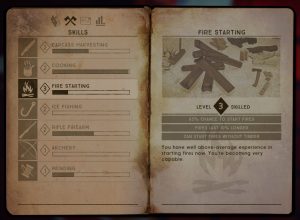Driving Safety
During my ongoing literature review I often discover interesting facts about things I’ve never thought about. Sometimes I can connect these facts with my own observations: The result is mostly a completely new idea why things are as they are. Maybe these ideas are new to you, too. Therefore I’ll share my new science based knowledge with you!
This week: This time, I think about how realistic racing simulations can improve a player’s driving skills but also increase the awareness for potential risks and dangers at the same time.
In #120, I discussed the effects of playing racing simulations which resulted in an alternation of my perception of speed and an improvement of my spatial attention as well as reaction time. Furthermore, racing simulations, in case they are played with a force feedback steering wheel and pedals, share similar demands with real world driving, thus training a player’s car control knowledge which easily can be transferred from the virtual environment to the real world. In sum, racing simulations improved all my skills that are relevant for car driving thus helping me to become a better and safer driver.

Risks of racing
However, racing simulations also demonstrated me the risks and dangers of driving cars at their limits and showed me the human limits. For instance, trying to recover a car that started to oscillate at speeds exceeding 200km/h by using only a single hand on the steering wheel is a very challenging or, depending on the car’s characteristics, even impossible task. Similarly, driving very close behind a different car might result in good opportunities to overtake the car ahead in a racing scenario, but it also exponentially increases the risk of colliding with the other vehicle. In addition, it applies some pressure on the driver that is being chased, which of course is wanted in a racing scenario, but causes an unnecessary safety risk on public roads.
With those experiences made in the safe environment of a racing simulation, I feel much better prepared for potential situations that might arise while driving in the real world. Unfortunately, the knowledge gained by perfoming virtual racing on a frequent basis resulted in a feeling of precariousness when I drive on public roads, too. Frequently, I see other drivers with only two fingers on the steering wheel or have to endure a car that drives only a few meters behind me. Of course, there always is the potential that the drivers possess well advanced driving skills, but chances are high that those people are not able to correctly react to critical situations thus creating an unnecessary risk. In addition, even when they would have well trained driving skills, then this behavior still results in an increased chance of causing an accident as they can not predict what other drivers do or if there is a bump in the roads that upsets the car. Finally, having advanced driving skills would also result in a behavior that reduces risks to a tolerable minimum.
In the end, computer games create effective training environments that can greatly improve our skills but also demonstrate risks in a safe environment. It is time that we start to use them on a more frequent basis in education to achieve better learning outcomes.

